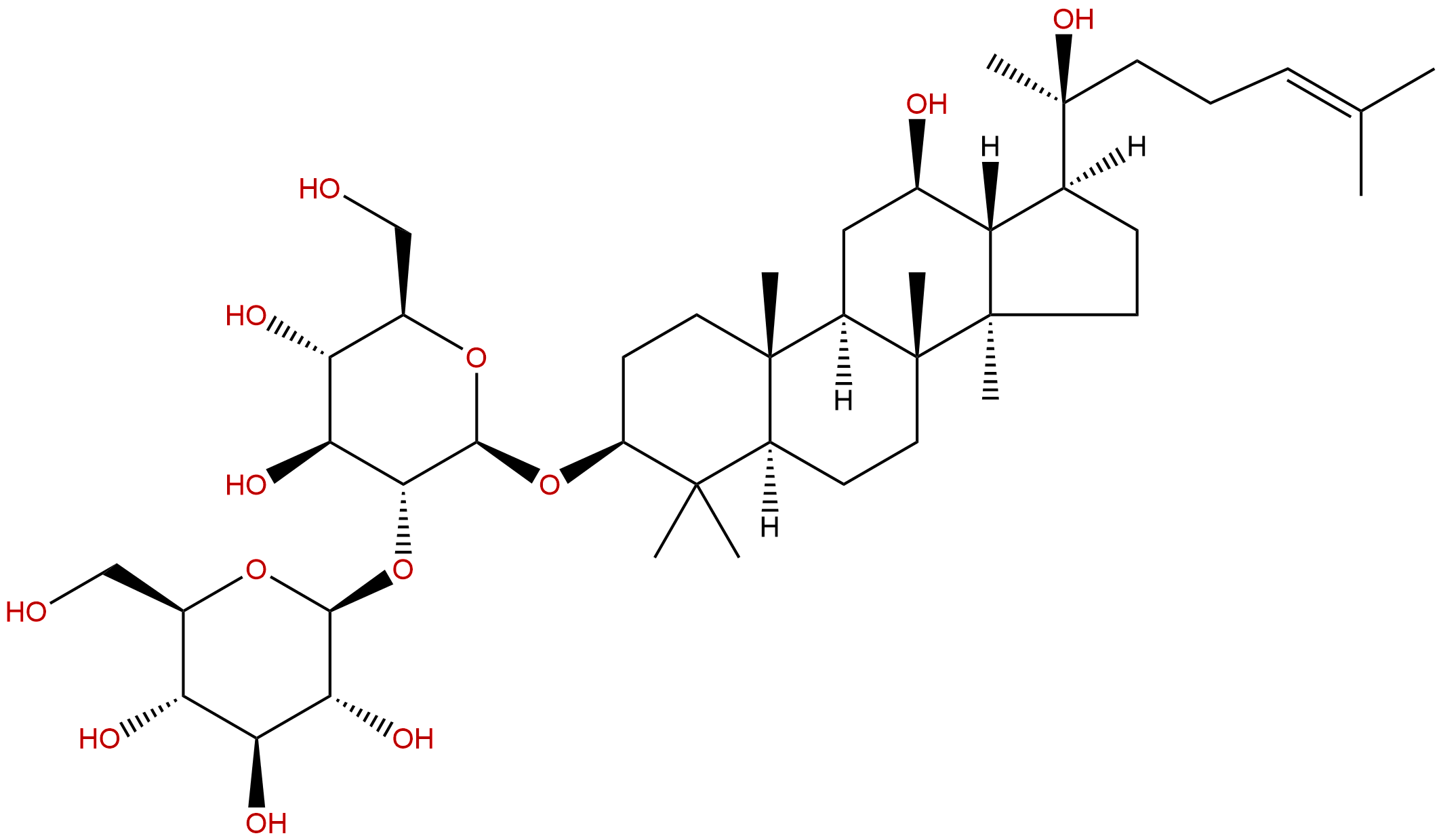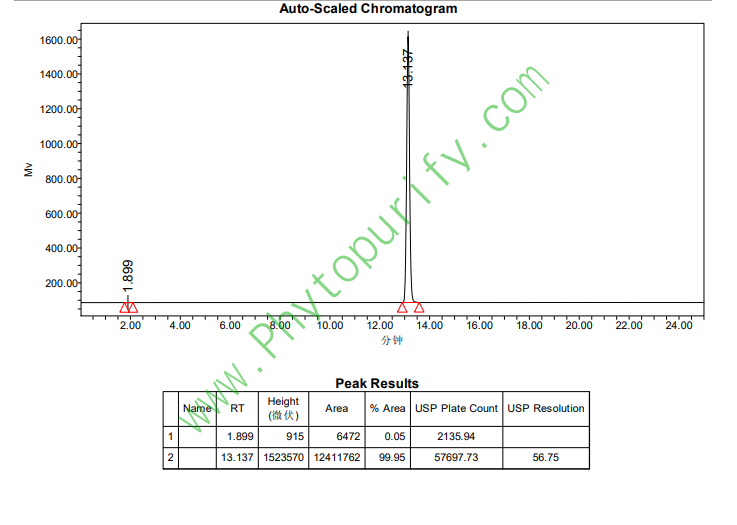
Ginsenoside Rg3CAS No.:14197-60-5
|
||||||||||
 |
|
|
||||||||

| Catalogue No.: | BP0666 |
| Formula: | C42H72O13 |
| Mol Weight: | 785.025 |
Product name: Ginsenoside Rg3
Synonym name:
Catalogue No.: BP0666
Cas No.: 14197-60-5
Formula: C42H72O13
Mol Weight: 785.025
Botanical Source: Panax spp.
Physical Description: White powder
Type of Compound: Triterpenoids
Purity: 95%~99%
Analysis Method: HPLC-DAD or/and HPLC-ELSD
Identification Method: Mass, NMR
Packing: Brown vial or HDPE plastic bottle
Storage: Store in a well closed container, protected from air and light. Put into refrigerate or freeze for long term storage.
Whenever possible, you should prepare and use solutions on the same day. However, if you need to make up stock solutions in advance, we recommend that you store the solution as aliquots in tightly sealed vials at -20℃. Generally, these will be useable for up to two weeks.
The product could be supplied from milligrams to grams, up to kilograms
Inquire for bulk scale.
Descriptions:
Ginsenoside-Rg3, possess an ability to inhibit the lung metastasis of tumor cells, and the mechanism of their antimetastatic effect is related to inhibition of the adhesion and invasion of tumor cells, and also to anti-angiogenesis activity.[1]
Ginsenoside-Rg3 (2.5 or 5.0 mg/kg body weight,s.c. injections) inhibits cancer metastasis through activities that do not affect the growth or vascularity of intestinal cancers.[2]
Ginsenoside Rg3 has anti-tumor property through its angiosuppressive activity, is a ginsenoside monomer with high anti-cancer activity.[3,4]
Ginsenoside-Rg3 has new pharmacological activity against testosterone-induced prostate overgrowth,downregulates AR by facilitating the degradation of AR protein, could be potential therapeutic regimens for treating BPH.[5]
Ginsenoside-Rg3 is a novel drug, capable of inhibiting the early of scarring (HS) and later HS. GS-Rg3/electrospun is a very promising new treatment for early and long-term treatment of HS.[6]
References:
[1] Mochizuki M, Yoo Y C, Matsuzawa K, et al. Biol Pharm Bull, 1995, 18(9):1197-202.
[2] Iishi H, Tatsuta M, Baba M, et al. Clin Exp Metastas , 1997, 15(6):603-11.
[3] Yue P Y K, Wong D Y L, Wu P K, et al. Biochem Pharmcol, 2006, 72(4):437-45.
[4] Xue-Long L I, Yao-Yao F U, Sun S Y, et al. Journal of Dalian Polytechnic University, 2010,29(6):396-8.
[5] Bae J S, Park H S, Park J W, et al. J Nat Med, 2012, 66(3):476-85.
[6] Cheng L, Sun X, Hu C, et al. Acta Biomater, 2013, 9(12):9461-73.
[7] Zhao Q, Zheng X, Jiang J, et al. J Chromatogr B , 2010, 878(24): 2266-73.
HPLC of Ginsenoside Rg3
